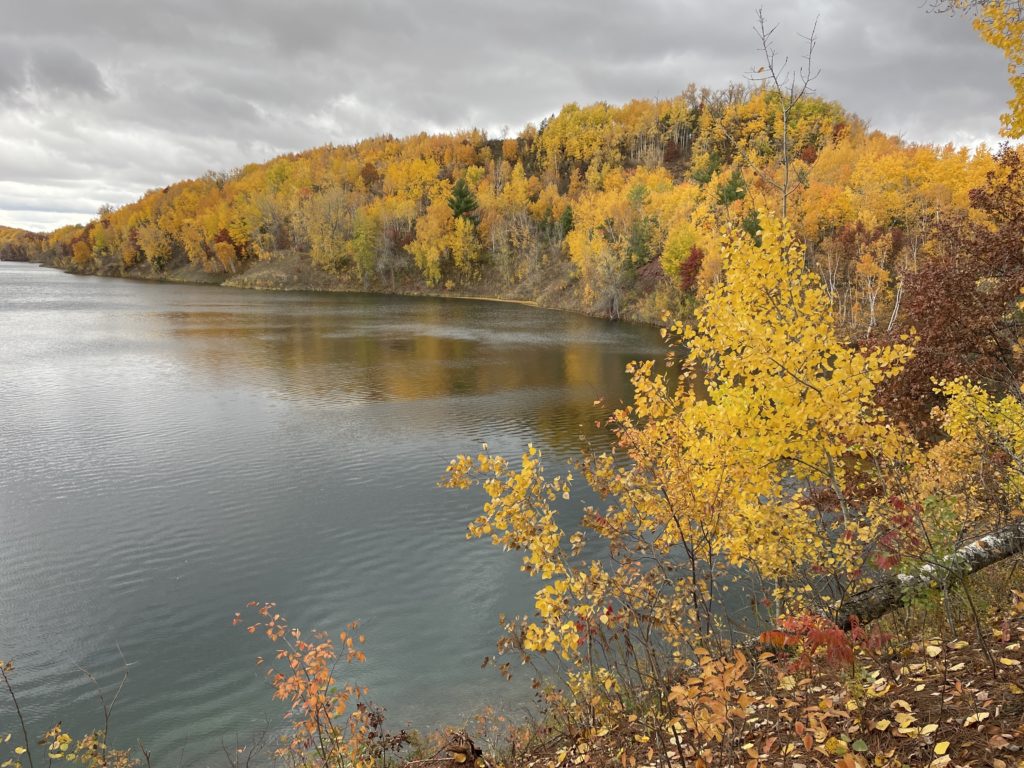This past week, my team and I traveled to Canmore, Alberta for some on-snow skiing. Every fall, the Camore Nordic center creates a snow ribbon loop called “Frozen Thunder”. The snow from last year’s season is preserved throughout the summer under a pile of sawdust, and once it is cold enough, the snow is pulled out from under the insulation and spread around a small loop. This is what our team has been skiing on this past week!
Transitioning back onto snow after months of being away can be intimidating, awkward, and sometimes frustrating (even for high level skiers!). Throughout our week in Canmore, I began asking my teammates what they were thinking about while skiing on snow for the first time this season in terms of technique, training and mindset. Below, I have compiled their list of tips for transitioning back to snow!
Remember to Glide
After a long summer away, it’s easy to forget to glide on your skis once you get back on snow. With both skate and classic skiing, a lot of your speed is coming from gliding. To achieve a good glide, you can think about having complete pushes on both legs and making sure that these pushes are actually propelling your body forward over your skis. – Simon Zink
Don’t Rush Intensity
When first getting back to snow, it’s important not to jump into intensity too quickly. A good rule of thumb is to give yourself around six easy skis before you do intervals, especially if you don’t rollerski a lot. These easy sessions will help you get more efficient on snow and allow you to have more productive interval sessions later on. – Andy Newell (Coach)
Setting your pocket
When classic skiing on snow for the first time in the season, its important to think about setting your kick pocket. If you’re someone who rollerskis during the summer, you can become accustomed to using your rollerski rachets and letting your skis fly out behind you. If you use this same technique on snow, you will likely be slipping a lot and have trouble getting up steep hills. So, when you get on snow, think about throwing your foot forward and then pressing down with each classic stride (like squishing a bug under the balls of your feet). – Erin Bianco

Riding a Flat Ski
A lot of beginner skiers will ski on the edges or their skis instead of riding a flat ski. Gliding on a flat ski will allow you to keep up your momentum and will take you further down the trail with each push. You can practice riding a flat ski by doing some legs only skiing and focusing on your lower body. – Noel Keeffe
Adapt your Technique to the Conditions
Summer rollerskiing doesn’t really have varying conditions, it’s just hard pavement every day. When you get back on snow, sometimes it will be icy and firm, and other times in will be deep slush and slow. Its important to adapt your technique to the condition. This could look like quickening your tempo and having light feet when you are skiing through softer snow. It could also look like having bigger, more powerful strides when its firm. – Reid Goble

No-Pole Skiing
Legs only drills are not just for beginners. Every year when returning to snow, it’s extremely valuable to do some no-pole skiing. For classic, no pole skiing can help you remember how to have a powerful leg drive and a fast, snappy kick. It can also help you to regain trust in your skis without the use of a rollerski ratchet. For skate, no pole skiing can help with weight transfer, balance, and remembering how to glide confidently on snow. – Hannah Rudd
Keep your Easy Sessions Easy
When you get back on skis, its easy to pop your heart rate up higher than you intend it to be. Don’t be afraid to take it really chill, especially on the hills. Once you adjust to being on snow, you will likely see that your heart rate and fatigue levels will go down a bit after each session. – Willson Moore



